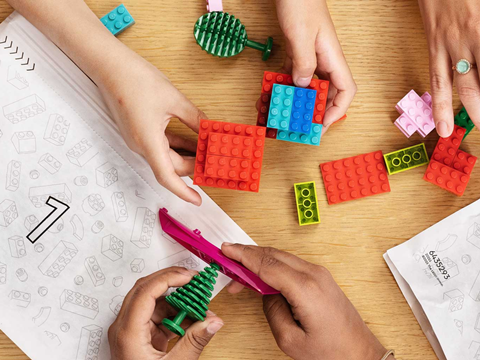
Aiming to transition completely into sustainability-minded packaging materials by 2025, Lego is introducing paper packets to deliver bricks in sets; offering consumers fibre-based containers and bags when shopping in-store; and delivering online orders in ‘100% paper’ packages, from the boxes to the tape used to seal them.
Lego plans to ensure all its packaging is made from responsibly sourced materials, whether renewable or made from recycled content and certified by the Forest Stewardship Council (FSC C117818). Recyclable packaging is set to be introduced across its core products, licensed products made by company partners, and all other areas of its business; this includes transitioning into paper-based bags across all its Lego sets.
Right now, the company claims that 93% of its packaging by weight is made from paper, cardboard, and other paper-based materials. Its boxes are still said to contain bags made of polypropylene or low-density polyethylene, but plans are in place to phase them out in favour of bags made of over 95% paper – an effort first announced in 2021.
These new bags are set to be produced from FSC-controlled wood sourced from FSC-certified forests. They also claim to be verified as recyclable in the European Union, United States, and Canada, with guidance provided on-pack, although Lego recommends that consumers consult their local authorities on how to dispose of the bags in their country, region, and/or municipality.
Although it plans to completely embrace paper-based bags, the company raises concerns that the material could rip or become damaged in transit, especially in humid climates. It clarifies that its new bags will feature a thin plastic coating on the inside for sealing and product protection.
Similar bags have been in circulation since 2022, when Lego replaced the single-use plastic wrap packaging its baseplates with a paper redesign.
As for its boxes, Lego explains that they are made from cardboard – specifically, corrugated fibreboard (PAP 20) or non-corrugated fibreboard (PAP 21). Said to be certified as responsibly sourced in line with FSC C117818, they are apparently recyclable wherever the relevant infrastructure exists.
Boxes sold in North America display the How2Recycle label, which indicates the pack’s recyclability and guides US and Canadian consumers through the disposal and recycling processes.
Some Lego packages constitute an outer box made of corrugated fibreboard with other fibre-based packs inside, either paper-based bags or smaller boxes made of non-corrugated fibreboard. In these cases, the company clarifies that the box will display the PAP 20, PAP 21, and PAP 22 identification codes, the latter of which signifies the presence of paper. Triangular symbols with chasing arrows will direct consumers to open the pack.
On the shop floor, Lego is taking further steps to reduce its plastic consumption. Its Pick a Brick service, in which consumers can buy individual parts in-store, previously offered plastic cups for consumers to store and carry their bricks; these have been replaced with paper-based flat-pack containers.
Similarly, the Build a Minifigure service for customized Lego figurines has transitioned from single-use plastic boxes to recyclable cardboard boxes. Lego has also sought to phase out its single-use plastic retail bags across Lego Stores worldwide since 2020.
Online retail has also come into consideration. Orders from the Lego website in Europe are said to be delivered in 100% paper-based, FSC-certified, and recyclable shipping packages, including paper air pillows and paper-based tape. Apparently, no single-use plastic is utilized in the pack.
On the other hand, Lego concedes that the paper required to protect its products is heavier than plastic, so it has carried out tests to gauge the minimal amount of filler needed to keep products safe in transit. So far, it has found that its smallest sets do not require filler materials, and their removal has apparently saved 25 tonnes of paper every year.
Lego emphasizes that any new, sustainability-minded packaging design its tested ‘extensively’ by Lego itself and independent laboratories in order to confirm its recyclability before roll-out. Yet it also highlights its intent to facilitate a positive consumer experience when unpacking its sets.
After testing around 15 different packaging prototypes in different shapes, materials, and graphic designs, it claims that children preferred the suspense of an opaque paper packet over the visibility of a transparent, single-use alternative. Its larger paper-based bags are also designed to stand on their own, helping consumers store loose bricks while they build their set; and each pack provides product information on-pack to account for every brick and help prevent any from getting lost.
Beyond the packaging, Lego previously considered producing its bricks from recycled PET bottles. Announced in 2021, the initiative sought to address young consumers’ concerns about the environmental impacts of plastics and phase crude oil out of its brick production within two years, but ongoing testing and development was set to slow down the bricks’ distribution in product boxes.
However, the Financial Times reported last year that Lego had walked back on this decision. Apparently, the prototype rPET bricks were more energy-intensive to produce than virgin plastics made from crude oil, although the company said it was still “fully committed” to finding an alternative material.
Similarly, Hasbro confirmed that rPET and bio-PET windows and blisters would return to its 6-inch figure packaging, reversing the company’s decision to turn its back on plastics in 2019. The change in tune was motivated by consumer feedback and sought to balance functionality and recyclability within its toy packaging.
If you liked this story, you might also enjoy:
How are the top brands progressing on packaging sustainability?
Sustainable Innovation Report 2024: Current trends and future priorities
Reuse vs. single use – which is better for the environment?
The ultimate guide to global plastic sustainability regulation

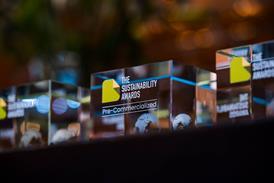
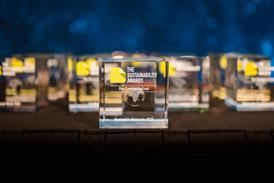
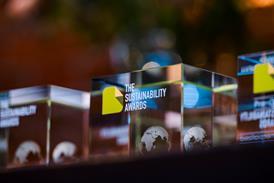
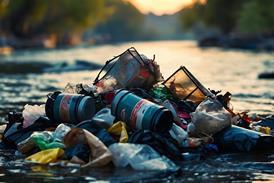
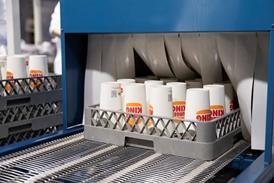










No comments yet